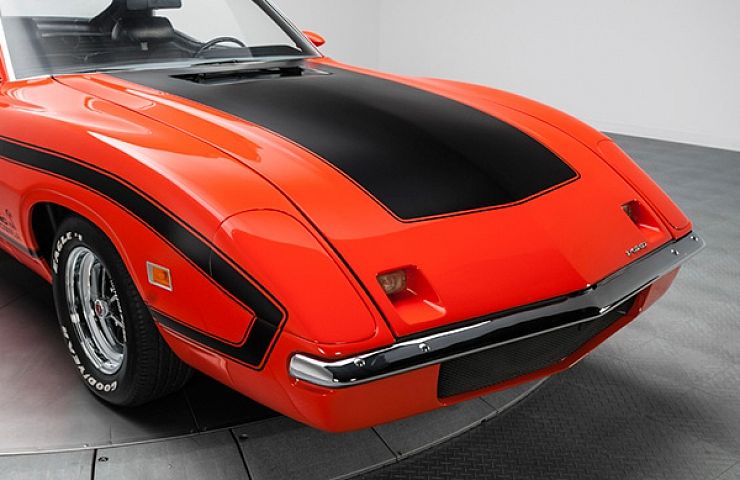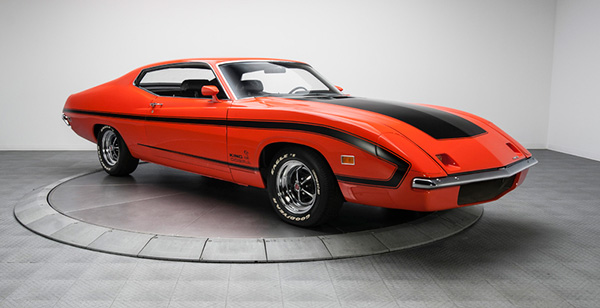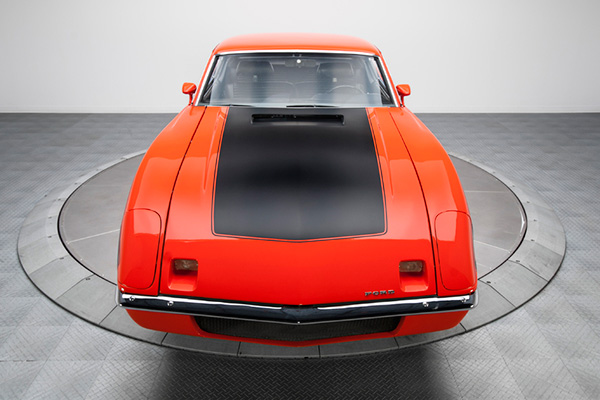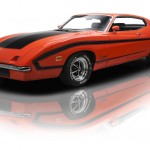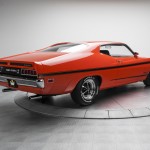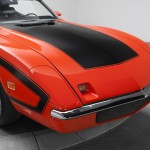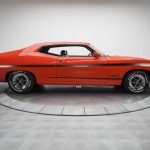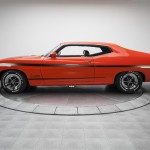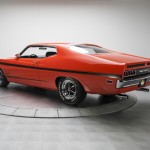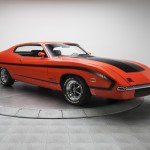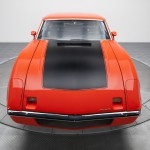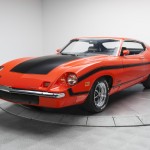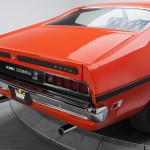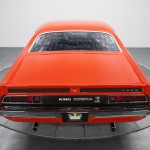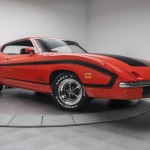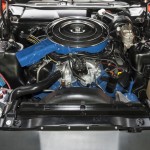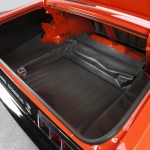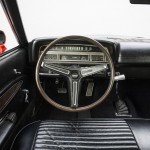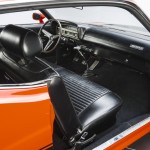It’s widely assumed that American muscle cars are all about horsepower. But that overlooks the race for aerodynamics that characterized the 1969 and 1970 Nascar Grand National seasons, known as the “Aero Wars.” The fierce competition between Ford and Chrysler reached epic proportions, when Ford built two (or three, depending on what you read) prototypes for the 1970 Ford Torino King Cobra, a sleek and wicked vehicle well-suited to its name. But it never advanced past its test platforms. Luckily, the two cars were saved and one is now available on eBay for a modest $456,000.
During that period, General Motors was taking a hiatus from racing—so Ford and Chrysler were pitted in a battle for Nascar supremacy. It was becoming too expensive and difficult to make further incremental gains in horsepower, so carmakers began in earnest to invest in aerodynamics.
Ford’s Talladega Torino and Mercury Cyclone Spoiler were already starting to employ designs for better aero, but a new standard was set with the Dodge Charger Daytona, the first car in Nascar history to break the 200-mph mark. The Charger’s key idiosyncratic features were a 23-inch-tall rear stabilizer wing, and a special missile-shaped nose cone to replace the traditional flush grille.
Ford had to respond. It enlisted famed muscle car designer Larry Shinoda, who turned the sleek Ford Fairlane into a model dubbed the King Cobra, powered by a 700-horsepower variant of the Boss 429. Unlike the Mopar aero cars, which modified both ends of the body, Shinoda focused on the nose, recessed headlights and hood. His front-end design deftly split the wind and sent it along a seven-foot fiberglass hood, which served as a ramp, creating maximum downforce. The engineering goals yield the car its characteristic long and lean profile.
But bigger forces kept the Ford Torino King Cobra from being put into competition. Historians differ on which combination of influences had the biggest impacts. There were concerns about the emerging dominance of these aero cars in terms of fair corporate competition, and safety worries about the dangerous speeds they produced. Several well-known drivers lost their lives on the tracks in the 1960s.
Nascar, with rules about using stock models, responded by bumping the required number of units to be made and sold from 500 street versions to 3,000 cars. It has been difficult enough to sell 500 of the radical aero designs to everyday customers. With a change in corporate leadership (and will) at Ford, the King Cobra program was scrapped—and most signs of its existence, including clay models and fiberglass mock-ups, were destroyed. Fortunately, two prototypes were saved by Bud Moore, a celebrated NASCAR car owner.
The yellow version of the King Cobra prototype is housed at Floyd Garrett’s Muscle Car Museum in Sevierville, Tenn. The blue one has been painstakingly restored, including the location and re-application of the original nose. An exhaustive list of engine and body components is described in the eBay listing.
See Ford Torino for sale on eBay.

